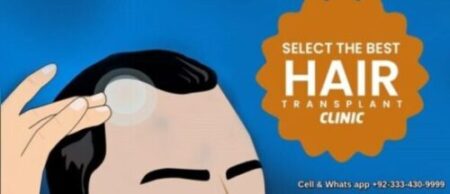Hair loss, also termed alopecia, is the most common problem. It may affect just the scalp or the entire body. The known causes for the condition include heredity, hormonal imbalance, associated with a medical condition or it can be a part of one’s physiological process of ageing. This condition can be temporary or permanent.
‘Baldness’ is defined as excessive and noticeable hair loss. It can occur in both genders but is found more commonly in men. Not only is it terrible regarding one’s looks but also inculcates anxiety in the patients.
Hair fall is inevitable:
Every one of us typically loses 50 – 100 hair daily. But this is not noticeable because new follicles are growing underneath. Baldness is associated with the condition of diminished re-growth.
· You cannot run from alopecia if this condition is associated with heredity. It occurs slowly in a well predictable manner – receding hairline or bald spots.
· Hormonal changes due to pregnancy, childbirth, menopause, or thyroid hormone imbalance or androgenic hormone imbalance can result in baldness.
· Underlying medical conditions, like Alopecia Areata, scalp infection, Trichotillomania also makes baldness difficult to stop.
· Radiation therapy and stressful conditions e.g. trauma, shock, etc damage the follicular re-growth cycle.
There are three kinds of approaches for patients: some leave the condition untreated while others try to cover it up with hairstyles, makeup, or some accessories. And still, some people have the guts to explore the treatments for the prevention of further loss or restoration of hair growth.
Treatment: Laser hair therapy:
Laser light therapy also known as ‘Red light or Low-Level Laser light Therapy (LLLT)’ is a clinically proven technique that revitalizes blood circulation through blood vessels of the scalp (by triggering vasodilation) that stimulates the follicles to grow fuller and thicker. It makes follicles enter the anagen (growth) phase of the growth cycle.
Why do we recommend Laser hair therapy?
Below are the reasons that allow us to prescribe this therapy:
· It is safe and effective in the case of both men and women.
· People have reported finding a significant increase in follicular growth.
· Research claims that LLLT also increases their strength.
· Unlike the techniques of surgical transplantations, LLLT is a non-invasive procedure.
· It does not give you any significant pain.
· There are no justifiable side effects.
· Clinically proven technique.
· It does not lower DHT (dihydrotestosterone) or alters any of the hormonal levels.
Why do we not recommend LLLT?
Below are the negatives that advocate ‘why should someone not prefer Laser hair therapy?’
· It is claimed that laser therapy works for some people and not for others.
- It demands time; several sessions a week for months.
- It is costly.
- It may not be effective for patients in the advanced stages of alopecia as compared to those in the early stages.
- It can interfere with the effects of some photosensitizing medications (that brings chemical modification to skin that may increase its sensitivity to light).
- It is not safe and effective to be used as long term treatment.
But it must be noted that positives and negatives or merits or demerits come with every procedure. You should consult your doctor to plan a procedure suitable for you.
To whom do we recommend?
Laser hair therapy is an in-demand procedure, best suited for people having diffused patterns of alopecia for example male pattern baldness (MPB) or female pattern baldness (FPB).
How is Hair loss treatment – Laser hair therapy carried out?
The procedure involves the use of low-level laser lights that expose tissues of the scalp to photons of light allowing them to be absorbed by weaker cells so that they can restore their strength. This results in reacquiring functionality i.e. regaining the follicular re-growth.
In addition, the laser stimulates the blood circulation underneath blood vessels of the scalp that aids in the overall aim of the therapy. This is further facilitated by the drug Minoxidil.
LLLT can be carried out by handheld devices, laser caps or larger devices as used in the beauty salons and respective clinics.
How effective is laser hair therapy effective?
The effectiveness is individual – dependent i.e. varies from person to person. Till now research has proved it a significantly effective and safe procedure that is less invasive and less painful than the surgical transplantation technique.
But it is not as effective as other treatments. For example, the effectiveness and success rate for FUE transplant is as high as 90% while that of laser light therapy is just 39%.
Factors determining successful Laser hair therapy:
· Consistency regarding appointments.
· The earlier you begin your treatment the better.
· This treatment may not always work for everyone. It may produce noticeable results for androgenic alopecia but on the other side people with complete baldness will find little or no benefit from this treatment.
Evaluating the cost:
Price of the Laser light therapy varies based on:
· Geographical location
· Number of sessions you require
· Extent and severity of alopecia
· Skillfulness and demand of your doctor
· Type of laser device used during the procedure
· Price can range from hundreds of dollars (for simple devices) to thousands of dollars for high-end devices.
What other treatments are available?
Treatment of male pattern baldness depends upon its cause and it varies from person to person:
· Androgenic alopecia is treated by administering synthetic androgens and by medications that stimulate the production of adrenal androgens, for example, Finasteride, etc.
· Alopecia due to other causes is treated medically by Minoxidil – a drug primarily for controlling hypertension.
· Surgical transplantations: Surgical transplantation techniques involve:
1. FUT (Follicular Unit Transplantation) or FUSS (Follicular Unit Strip Surgery) is a traditional technique that involves the removal of a patch of the scalp and grafting it to the recipient site.
2. FUE (Follicular Unit Extraction) is a modern method of removing individual follicles from the donor site and implanting them to the recipient site.
3. FIT (Follicular Isolation Technique) is an updated version of FUE.
· Other non-surgical treatments include Platelet-rich plasma (PRP), Adenosine ketoconazole, Scalp Micropigmentation (SMP), etc.
Preventive measures:
You can take the following measures to prevent alopecia:
· Avoid styling that puts stress on your follicles like tight ponytails, braids, etc.
· Avoid heating or blow-drying that are potentially damaging.
· Avoid chemical exposure to the scalp, for example, dyes, etc.
· Use mild shampoos and soft brushes
· Adopt proper hygiene
· Seek help from natural oils in your cabinet.
Conclusion:
Approximately 35 million men and 21 million women suffer from alopecia. This significant percentage labels it as a worldwide problem for which people demand professional services and medical techniques. Thus, treatments like Laser light therapy have gained popularity in the last decade. Scientific research on this therapy is limited but highly positive.
Due to the ever-increasing demand for such treatments, the pharmaceutical, as well as cosmetic industries are bound to provide a variety of products and procedures that claim to strengthen hair or prevent its loss. This is not only bringing a million dollars benefit to these industries but also paving a way for discoveries regarding more effective and innovative treatment techniques.
Get Free consultation | Call or WhatsApp | +923334309999


